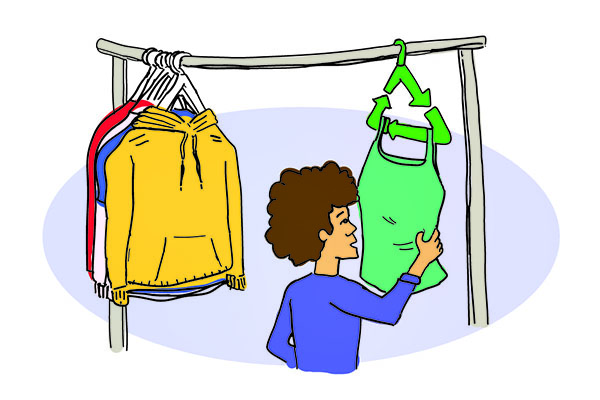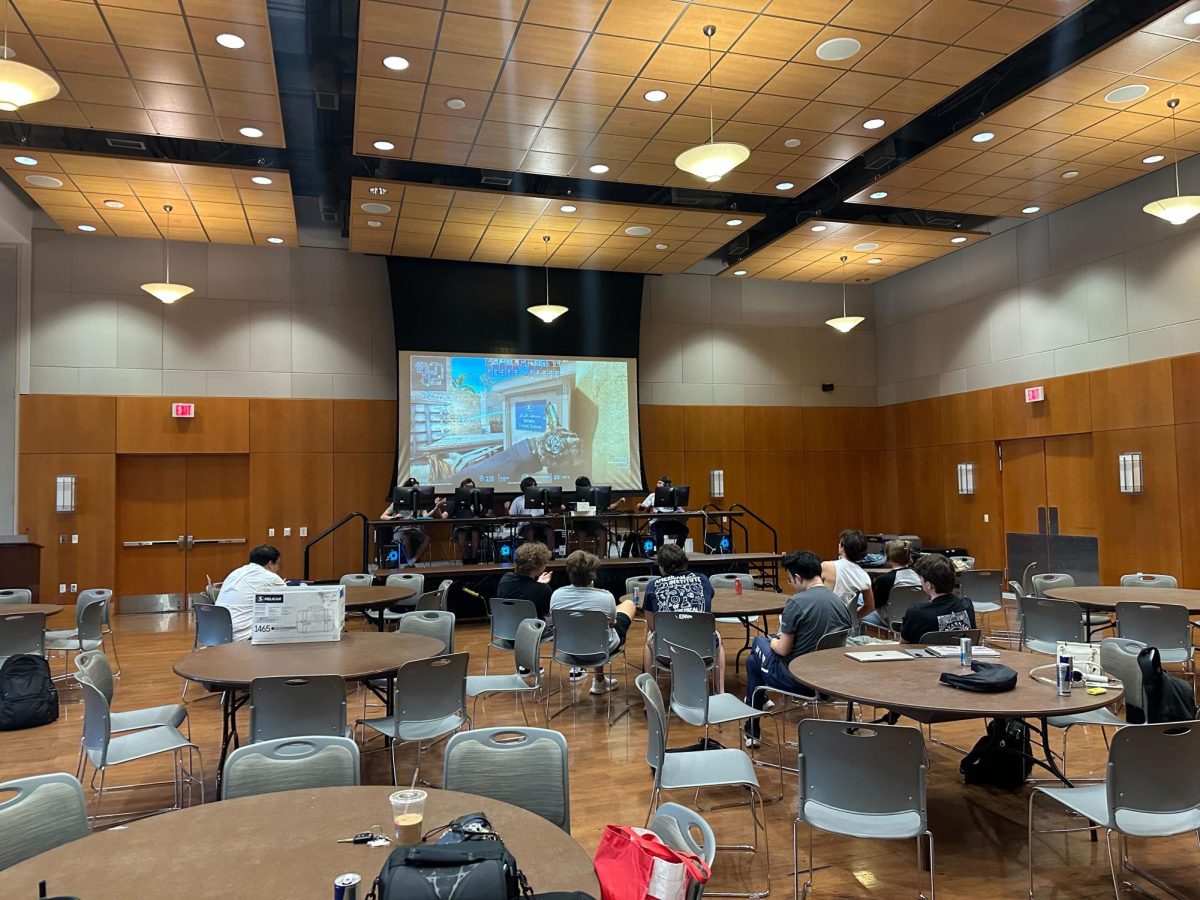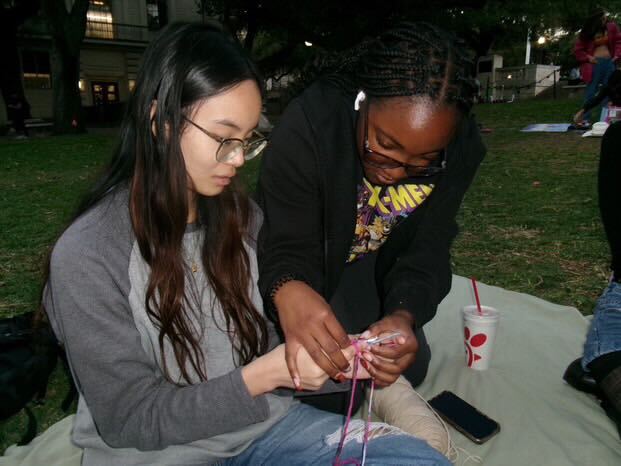If students want to shop ethically and sustainably for fashion, their options tend to lie between cheap thrift hubs or small, expensive boutiques.
Students following a sustainable lifestyle have to put in more effort to find the clothes they prefer to wear. Shopping sustainably includes buying secondhand or from companies that have ethical pay and limit negative environmental effects. Taking this extra step can benefit students’ wallets, government junior Bianca Ramirez said.
A major component of sustainable shopping is avoiding impulse purchases, Ramirez said. Utilizing wardrobe items to their full potential, she said, is another way to curb excessive consumption.
“It’s more just realizing that you have to buy less,” Ramirez said. “Am I going to wear this? Do I love this? Am I going to feel confident in this?”
Ramirez said she spends less on clothes now than before making this change, something Lauren Cook, a supply chain management and sustainability studies junior, and sustainability studies junior Katherine Skluzacek said they experienced as well.
“I try to buy secondhand or at least invest in a good, sustainable brand,” Skluzacek said. “Like these fancy vegan leather boots that were very expensive were a good investment.”
Sustainable brands such as Reformation and Everlane provide an online market for ethical shoppers, providing access to profit margins, which can help students assess if they should invest in a brand, Cook said.
“It’s very easy for a brand to greenwash, which is a term (for) when a company tries to present themselves as being more sustainable for the environment than they actually are,” Cook said. “If a brand is really sustainable, they’ll often let you know who’s making the clothes (and) the actual costs of making what you’re wearing.”
Skluzacek said many pieces in her wardrobe were gifted to her and that friends and family give her hand-me-downs. Ramirez said she receives more expensive, sustainable pieces as gifts on holidays.
College students, due to often limited funds, often opt to shop secondhand, but thrift shopping comes with burdens, Ramirez said. “It’s so hard to find something that’s going to fit you and you’re going to love,” Ramirez said. “Even though you’re spending less money, you’re spending more time.”
For people who rely on thrifting not for sustainable reasons, but for affordability reasons, an increase in demand for thrifting as a trend can negatively affect them and raise prices, Ramirez said.
“Social media influencers that can afford to buy sustainable items, but instead go thrifting and influence other people who can afford it, is problematic,” Ramirez said. “But (thrifting is) also still good for the environment.”
Thrifting gives the aesthetic of hippy, indie clothing, Skluzacek said, that might put limitations on style. Sustainable brands often only provide basics, Cook said, which are important and timeless but don’t have individual flair.
Students can learn to craft and mend clothes to customize them for their style, Skluzacek said. Besides clothing, Skluzacek makes her own detergent and uses sustainable toothbrushes and deodorant to reduce her environmental impact.
“When you’re buying from Forever 21 and H&M, it’s a human rights issue,” Ramirez said. “It’s contributing to these people being harmed by these corporations, and it’s not something I wanted to be a part of anymore.”
















